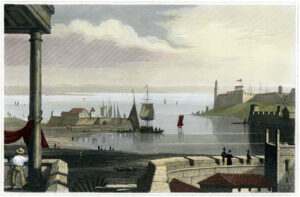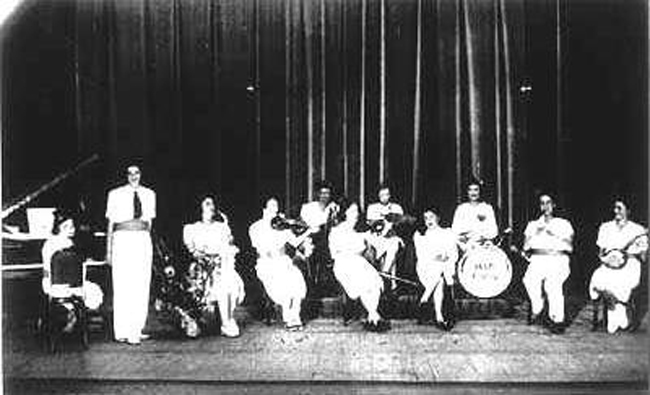by Elena Sheppard
Elena Sheppard, author of The Eternal Forest, joins us to discuss the myth of La Milagrosa. The Eternal Forest masterfully weaves Cuban mythology and history, and is on sale today!

In Havana’s vast Cristóbal Colón Cemetery there is a tomb that women, many of them pregnant, visit with the goal of having their hopes and wishes granted. The tomb belongs to a woman who during life was named Amelia Goyri de Adot, but after death has become better known as La Milagrosa, “The Miraculous One.” According to legend, Amelia and her child both died during the baby’s birth, and when it came time for the burial, Amelia was buried with the baby between her legs. When years later, the tomb was reopened, La Milagrosa’s baby had moved; no longer between her mother’s legs, she was now nestled snugly in her mother’s arms. It had to have been a miracle.
In my book—The Eternal Forest: A Memoir of the Cuban Diaspora—I touch on that story ever-so-briefly. Every place on earth has people and locations that are steeped in lore, but learning of La Milagrosa, a legend from my mother’s home country, with my own young children sleeping in the room next door, stirred something inside of me; that generational connection of motherhood and childbirth, the gut drop of sadness when you learn of someone who died giving birth. So much of my book is about how myths and stories are passed down, and how women are so often the keeper of those oral histories. I am endlessly fascinated by the ways in which ordinary lives, and ordinary moments, are turned into stories told so many times they get worn into legends. But there doesn’t seem to be much saved about La Milagrosa’s ordinary life; about who the woman was when she was simply Amelia, before she’d become a miracle.
What is known is that Amelia Goyria de la Hoz was born to Francisco Goyri and Magdalena de la Hoz on January 29, 1877. While alive, she belonged to Havana’s aristocracy and, they say, was raised alongside her three brothers by a wealthy aunt in the Palace of the Marquis de Balboa. They say too that she fell in love with the man she would marry, a second cousin, when she was only 13, but that her family thought him too poor. There is so little recorded about Amelia’s life, but it is recorded that she married that man, José Vicente Adot, on June 25, 1900. By then, he was a captain in the Liberation Army, fighting for Cuba’s independence. Less than a year after they’d wed, and eight months pregnant, Amelia died on May 3, 1901. She was 24 and the culprit was likely preeclampsia; her baby girl died too.
The myth begins to really take shape when it comes to how her husband comported herself after Amelia died. Legend says he visited her grave twice a day, not really believing she was dead. Legend says that once he arrived, he would knock on the tomb right above where her heart should be, as if knocking on a door, to wake Amelia up. Then he would speak to her for hours. When it came time for him to take her leave, he would put his hat over his heart and back away, never wanting to give his bride his back.
The tomb was reopened in 1914, thirteen years after Amelia’s death, in order to bury José’s recently deceased father. It was then that not only was the baby discovered in Amelia’s arms, but Amelia was discovered, legend says, entirely intact. A sure sign of holiness, or perhaps something supernatural.
José, for his part, spent the next four decades of his life, up until his own death, visiting his wife’s tomb. Today, thousands visit her tomb every year, asking for La Milagrosa to grant them miracles, and thanking her for the miracles she’s already granted. The tradition is to follow José’s pattern, so after people speak with La Milagrosa, they back away. Many who visit her are pregnant or want to be. Her tomb is often covered in flowers, in baby bottles, in tiny tablets bearing messages and prayers and thanks. She has come to be a symbol for motherhood, matrimony, something miraculous and possible.
Legends like this stir me. They are the types of stories that are passed down through generations; it is as easy to imagine a story like this existing in the 1st century as it is the 21st. That timelessness speaks deeply to what makes us human: our wants. Depending upon your beliefs about an afterlife, you may think Amelia knows her posthumous fate as La Milagrosa—or you may think her consciousness was buried with her bones. I have no answer for that, but I do believe in the awesome power of desire. I know there is something deeply connective and human about wanting something so potently—about wanting life so potently—that the only logical path forward is to plead with the dead.

Elena Sheppard is a graduate of Columbia University’s MFA, and her work has appeared in The New York Times, The Cut, The New Yorker, Vogue, The Guardian, The Los Angeles Review of Books, and W, as well as on NBC and MSNBC. She has been a writer-in residence at the Constance Saltonstall Foundation for the Arts, and taught creative nonfiction and journalism in Columbia’s High School Summer Program. She lives in New York with her husband and children.
The post La Milagrosa, Havana’s Miraculous One appeared first on The History Reader.




0 Comments